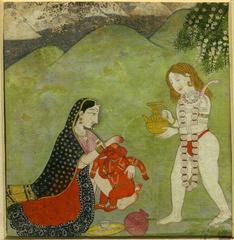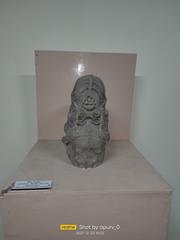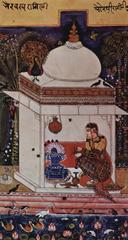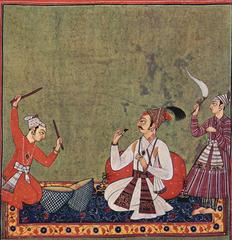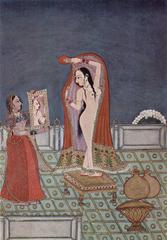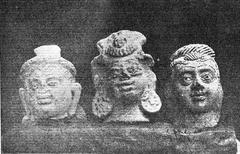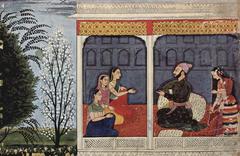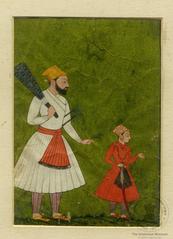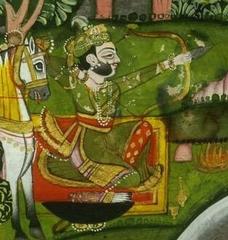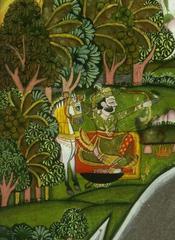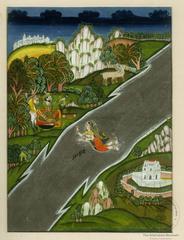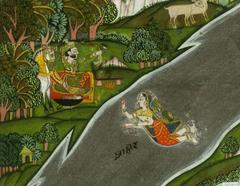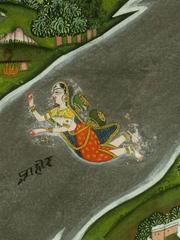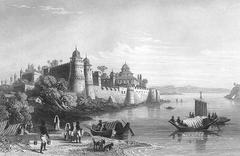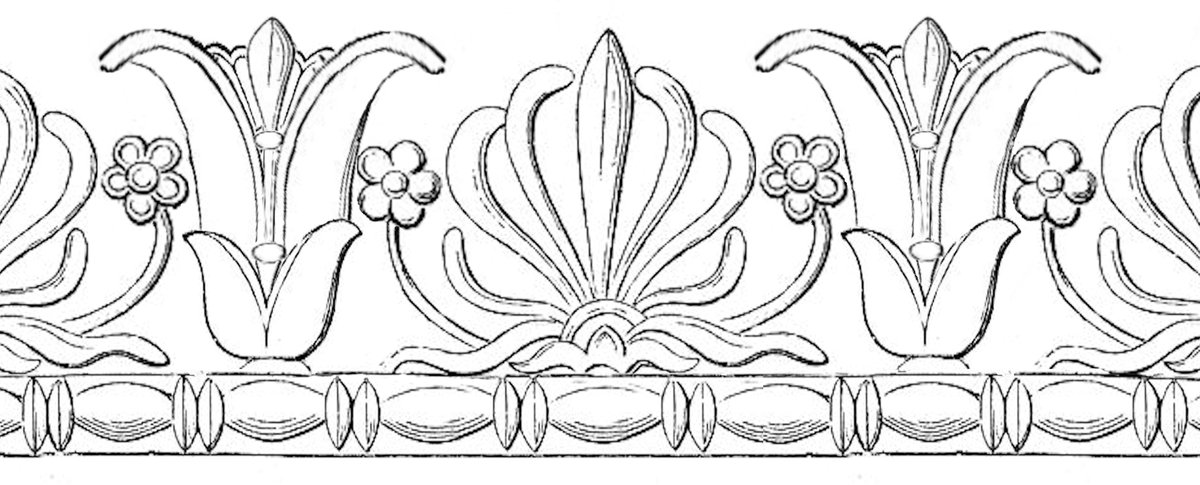
Allahabad Museum Visiting Information and Guide
Date: 18/07/2024
Introduction
The Allahabad Museum, located in the historic city of Prayagraj, India, is a treasure trove of the country’s rich and diverse cultural heritage. Established in 1931, the museum has evolved significantly over the decades, thanks to the efforts of influential figures like Madan Mohan Malaviya and Sir William Malcolm Hailey. Nestled in the verdant Alfred Park, this museum has witnessed India’s journey from colonial rule to independence and beyond. The museum’s vast collection spans various periods and regions, offering visitors a captivating journey through time and art. Whether you’re a history enthusiast, an art lover, or simply a curious traveler, the Allahabad Museum provides an immersive experience that highlights the evolution of Indian artistry, religious iconography, and historical narratives. This comprehensive guide aims to provide you with essential information, including visiting hours, ticket prices, and travel tips, to help you make the most of your visit to this iconic institution. For more detailed information and updates, visit the official website of Allahabad Museum.
Table of Contents
- History of Allahabad Museum
- Visitor Information
- Collections and Exhibits
- Travel Tips for Visiting Allahabad Museum
- Nearby Attractions
- FAQs
- Conclusion
- References
History of Allahabad Museum
The Genesis: A Vision Takes Root (1931-1947)
The museum’s story begins in 1931, with the tireless efforts of Madan Mohan Malaviya, an eminent Indian nationalist leader and educationist. Recognizing the need to preserve and showcase India’s rich cultural tapestry, he envisioned a museum in Allahabad, a city steeped in history and spirituality.
Malaviya’s vision resonated with Sir William Malcolm Hailey, the then-Governor of the United Provinces, who shared a deep appreciation for Indian art and culture. Hailey’s support proved instrumental in laying the foundation for the museum.
The museum found its home in the majestic Alfred Park, a sprawling green expanse in the heart of Allahabad. The park itself held historical significance, having witnessed the tumultuous events of the Indian Rebellion of 1857.
1947 marked a pivotal year for both India and the Allahabad Museum. As the nation celebrated its newfound independence, the museum opened its doors to the public, marking the culmination of years of dedicated work and unwavering commitment.
Expansion and Enrichment: A Growing Repository (1947-1977)
The post-independence era witnessed the museum’s steady growth and expansion. It benefited immensely from the contributions of Moti Chandra, a renowned scholar of Indian art and archaeology, who served as its Director from 1948 to 1950. Chandra’s expertise and guidance played a crucial role in shaping the museum’s early collections and establishing its academic rigor.
The museum’s collection grew exponentially during this period, encompassing a diverse range of artifacts spanning various periods and regions of India. Notable acquisitions included:
- Sculptures: Exquisite stone and bronze sculptures from the Gupta and Medieval periods, showcasing the evolution of Indian artistry.
- Terracottas: An extensive collection of terracotta figurines, offering glimpses into the daily life and religious practices of ancient India.
- Paintings: A remarkable assemblage of miniature paintings from various schools, including the renowned Pahari and Rajput styles.
The museum’s growing reputation as a center for art and culture attracted generous donations from private collectors and institutions. These contributions further enriched its holdings, solidifying its position as a premier museum in North India.
Modernization and Outreach: Engaging with the Present (1977-Present)
The late 20th century ushered in a new era for the Allahabad Museum, marked by a focus on modernization and public engagement. The museum underwent significant renovations to enhance visitor experience and ensure the preservation of its invaluable artifacts.
Technological advancements were integrated into the museum’s operations, with the introduction of digital displays, interactive exhibits, and online resources. These initiatives aimed to make the museum more accessible and engaging for a wider audience.
The museum also expanded its outreach programs, organizing workshops, lectures, and educational tours to foster a deeper understanding and appreciation of art and history among students and the general public.
Visitor Information
Planning Your Visit
To plan your visit, here is the essential information:
- Visiting Hours: The museum is open from Tuesday to Sunday, 10:30 AM to 4:30 PM. It is closed on Mondays and public holidays.
- Tickets: The ticket prices are very affordable. For Indian citizens, the entry fee is INR 20 for adults and INR 10 for students and children. For foreign nationals, the fee is INR 250.
Inside the Museum
Facilities:
- Restrooms: Available within the museum premises.
- Drinking Water: Facilities are available.
- Baggage Counter: A cloakroom is available for storing bags and personal belongings.
- Museum Shop: Visitors can purchase souvenirs, books, and replicas related to the museum’s collection.
Making the Most of Your Visit
- Allocate Sufficient Time: The Allahabad Museum houses a vast collection, and exploring it thoroughly can take several hours. Plan your visit accordingly to avoid rushing through the exhibits.
- Start with a Plan: Familiarize yourself with the museum’s layout and galleries beforehand to prioritize your interests. A map is usually provided at the ticket counter.
- Engage with the Exhibits: Take your time to read the descriptions and appreciate the historical and cultural significance of the artifacts.
- Attend Special Events: The museum occasionally hosts lectures, workshops, and exhibitions. Check their website or inquire at the counter for any ongoing events during your visit.
- Combine with Other Attractions: Allahabad (Prayagraj) is home to numerous historical and religious sites. Consider combining your museum visit with trips to places like the Triveni Sangam, Allahabad Fort, and Anand Bhavan.
Collections and Exhibits
Archaeology
Sculptures: The museum boasts an exceptional sculpture gallery, primarily featuring ancient Indian works. Highlights include:
- The Terracotta Collection: With pieces from the Mauryan and Gupta periods, this collection offers a glimpse into early Indian art and craftsmanship.
- The Buddhist Sculptures: Originating from regions like Sarnath and Mathura, these sculptures depict the life and teachings of Buddha, showcasing the evolution of Buddhist art.
- Hindu Deities: The museum houses a remarkable collection of sculptures depicting Hindu gods and goddesses from various periods, reflecting the evolution of religious iconography.
Other Archaeological Treasures:
- Prehistoric Tools and Weapons: These artifacts provide valuable insights into the lives of early humans who inhabited the region.
- Ancient Coins and Seals: These objects offer a glimpse into the economic and administrative systems of bygone eras.
- Epigraphical Records: Inscriptions on stone and metal plates provide valuable historical data and linguistic insights.
Art
The Painting Gallery: This section showcases a diverse range of Indian miniature paintings, including:
- Mughal School: Known for its intricate details and vibrant colors, this school of painting flourished under the Mughal emperors.
- Pahari School: Originating from the Himalayan foothills, this school is characterized by its lyrical style and romantic themes.
- Rajput School: This school, patronized by Rajput rulers, is known for its bold colors, dynamic compositions, and depiction of courtly life.
Decorative Arts:
- Textiles: The museum houses a collection of exquisite textiles, including brocades, embroideries, and woven fabrics, representing the rich textile traditions of India.
- Metalware: Visitors can admire a variety of metal objects, including ceremonial vessels, utensils, and decorative items, showcasing the skills of Indian metalworkers.
- Ivory and Bone Carvings: Intricately carved ivory and bone objects, including figurines, boxes, and decorative items, demonstrate the delicate craftsmanship prevalent in India.
History
The Jawaharlal Nehru Gallery: Dedicated to India’s first Prime Minister, this gallery houses personal belongings, photographs, and documents related to Nehru’s life and political career.
The Freedom Struggle Gallery: This section commemorates India’s struggle for independence from British rule. Exhibits include photographs, documents, and personal belongings of freedom fighters, providing a poignant reminder of the sacrifices made for India’s freedom.
Natural History
The museum also houses a small but significant natural history section, featuring:
- Preserved Specimens: Visitors can observe a variety of preserved animal specimens, including mammals, birds, reptiles, and insects, showcasing the region’s biodiversity.
- Fossils: The museum’s fossil collection provides evidence of prehistoric life and geological processes.
- Botanical Specimens: A collection of preserved plant specimens offers insights into the region’s flora.
Travel Tips for Visiting Allahabad Museum
- Best Time to Visit: The best time to visit the museum is during the cooler months from October to March. Avoid the peak summer months as the weather can be very hot.
- Getting There: The museum is located in Alfred Park, which is well-connected by public transport. You can take a taxi, auto-rickshaw, or cycle-rickshaw from any part of the city.
- Nearby Attractions: While visiting the museum, don’t miss other historical sites in Allahabad like Anand Bhavan, Khusro Bagh, and the Triveni Sangam.
FAQs
Q: What are the Allahabad Museum visiting hours? A: The museum is open from Tuesday to Sunday, 10:30 AM to 4:30 PM, and is closed on Mondays and public holidays.
Q: How much are the Allahabad Museum tickets? A: For Indian citizens, the entry fee is INR 20 for adults and INR 10 for students and children. For foreign nationals, the fee is INR 250.
Q: Are there guided tours available? A: Yes, guided tours are available and can be arranged at the museum’s reception.
Q: Can I take photographs inside the museum? A: Photography is allowed but may be restricted in certain sections. It is advisable to check with museum staff.
Conclusion
The Allahabad Museum stands as a testament to India’s rich cultural and historical heritage. Its vast collection, spanning archaeology, art, and natural history, offers a captivating journey through time, captivating visitors with its beauty and historical significance. The museum continues to evolve, embracing new technologies and innovative approaches to engage with contemporary audiences. It remains a vibrant cultural hub, playing a vital role in preserving and promoting India’s artistic legacy for generations to come. Whether you are a history enthusiast, an art lover, or a curious traveler, a visit to this museum promises a memorable experience. Stay updated by following the museum’s official website and social media channels.
References
- History of Allahabad Museum - Visiting Hours, Tickets, and Cultural Significance, 2024, Unknown Author source
- Exploring Allahabad Museum - Collections, Visiting Hours, and Tickets, 2024, Unknown Author source
- Complete Guide to Visiting Allahabad Museum - Timings, Tickets, and Tips, 2024, Unknown Author source

